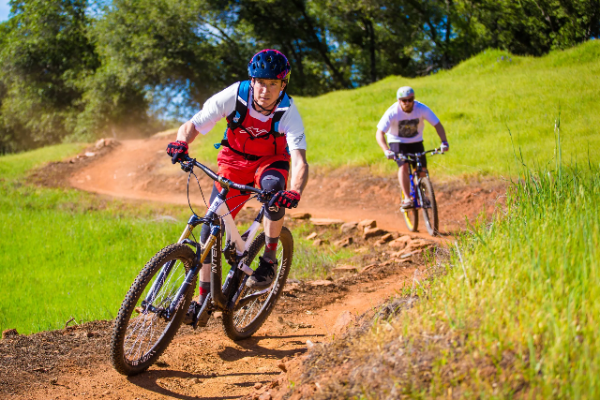Mountain biking is a thrilling sport. It involves navigating various terrains. Among these terrains, switchbacks are particularly challenging. Understanding switchbacks can enhance your biking experience. In this article, we will explore switchbacks in detail.
Introduction to Switchbacks
Switchbacks are sharp turns on a trail. They are often found on steep slopes. These turns allow the trail to gain elevation quickly. Switchbacks require skill and precision to navigate. They are common in mountainous regions.
The Importance of Switchbacks
Switchbacks are crucial in trail design. They help manage the gradient of a trail. Without switchbacks, trails would be too steep. This would make them difficult to ride. Switchbacks also help with erosion control. By zigzagging up a slope, they reduce water runoff. This preserves the trail’s condition.
Types of Switchbacks
There are two main types of switchbacks: uphill and downhill.
Uphill Switchbacks:
- Found on ascending trails.
- Require strong climbing skills.
- Riders must balance speed and control.
- Often involve tight turns and steep inclines.
Downhill Switchbacks:
- Found on descending trails.
- Require excellent braking skills.
- Riders must manage speed carefully.
- Often involve sharp turns and rapid descents.
Techniques for Navigating Switchbacks
Successfully navigating switchbacks involves several techniques:
Body Position:
- Keep your weight centered.
- Lean into the turn.
- Maintain a low center of gravity.
Speed Control:
- Approach the switchback at a controlled speed.
- Use both front and rear brakes.
- Adjust your speed as needed.
Line Selection:
- Choose the best path through the turn.
- Look ahead to plan your line.
- Avoid obstacles and loose terrain.
Common Mistakes and How to Avoid Them
Navigating switchbacks can be tricky. Here are some common mistakes and tips to avoid them:
Entering Too Fast:
- Slow down before the turn.
- Maintain a manageable speed.
Poor Body Position:
- Stay centered over the bike.
- Lean with the bike, not against it.
Inconsistent Braking:
- Use smooth, controlled braking.
- Avoid sudden, harsh braking.
Practice Makes Perfect
Mastering switchbacks takes practice. Find a trail with several switchbacks. Ride it repeatedly. Focus on improving your technique with each pass. Over time, you will become more comfortable and confident.
See Also: Is Mountaineering a Sport
Equipment Considerations
Your bike and gear can impact your switchback performance. Here are some factors to consider:
Bike Geometry:
- Choose a bike with appropriate geometry.
- Longer wheelbases provide stability.
- Shorter wheelbases offer agility.
Tire Choice:
- Use tires with good traction.
- Consider wider tires for better grip.
- Adjust tire pressure for optimal performance.
Suspension Setup:
- Proper suspension setup can aid control.
- Adjust suspension to match the trail conditions.
Conclusion
Switchbacks are a fundamental aspect of mountain biking. They add challenge and excitement to the sport. By understanding and practicing the techniques discussed, you can navigate switchbacks with confidence. Remember, practice and persistence are key. Happy riding!
FAQ: What Is a Switchback in Mountain Biking?
Q: What is a switchback?
A: A switchback is a zigzag trail or road that goes up or down a steep slope. It helps reduce the gradient of the slope, making it easier for bikers to climb or descend.
Q: How does a switchback work?
A: A switchback works by creating a series of short, sharp turns that alternate direction. This allows the trail to follow a less steep path than if it went straight up or down the hill.
Q: Why are switchbacks used in mountain biking?
A: Switchbacks are used in mountain biking to make steep hills more manageable. They allow riders to maintain momentum and control on ascents and descents.
Q: Are switchbacks difficult to ride?
A: The difficulty of riding a switchback depends on the rider’s skill level and the steepness of the hill. Some switchbacks can be quite technical and require good cornering skills and balance.
Q: How do I ride a switchback?
A: To ride a switchback, approach the turn at a controlled speed, use your body weight to lean into the turn, and keep your eyes focused on the exit of the turn. Be prepared to adjust your speed and line as needed.
Q: Can beginners ride switchbacks?
A: Beginners can ride switchbacks, but they should start with easier trails and work their way up to more challenging ones. Practice cornering and braking techniques before attempting steeper or more technical switchbacks.
Q: What should I watch out for when riding switchbacks?
A: When riding switchbacks, be aware of other riders, obstacles, and changing terrain. Always stay in control and be prepared to slow down or stop if necessary. Also, be mindful of your line choice to avoid cutting corners too tightly or running off the trail.

